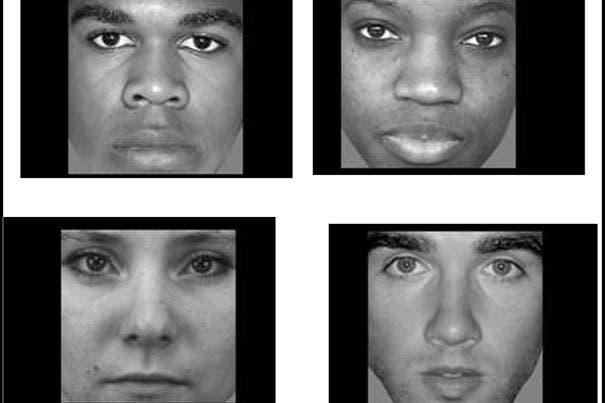
What’s the first thing you notice when you first look at a person? Is it the shoes? The eyes? The nose? The mouth? There’s one thing to consciously notice and another to passively acquire data, something the brain constantly does. Harvard researchers have found that the first things the brain recognizes when interacting with other people is race and gender.
“We found that a brain region called the fusiform face area, or the FFA for short, seems to play a key role in differentiating faces along these two dimensions,” said Contreras, the study’s first author, who earned his doctorate in psychology. “When we studied the patterns of activation in this region, we found they were different for black and white faces, and for female and male faces.”
To measure how the brain acquires and process these features, the researchers turned to functional magnetic resonance imaging, or fMRI, a technique that allows researchers to monitor changes in blood flow in the brain in real time. Participants were instructed to enter the scanner and were shown various portraits of people on a computer screen. They had to quickly identify whether the faces were male or female, and for others whether the faces were black or white.
“We take images every few seconds,” Contreras explained. “Using statistical analysis, we can identify patterns of neural activity that correspond to different social categories. We could then look for differences in those patterns between the faces of blacks and whites, and between the faces of men and women.
“We also found evidence that, when we asked participants to pay attention only to the sex of a person, this region was still recognizing race. When we told them to pay attention to race, the FFA was still recognizing sex, so it appears as though this region is constantly categorizing faces by sex and race.”
So the brain focuses on both of these key aspects at the same time to acquire time. This signifies that these traits are extremely important, and as always when looking for answers to such questions you need to address evolutionary biology. One reason might be that it can be important to know the sex and race of other people, especially in contexts in which those differences should change the way in which you interact with them.
“Sex and race can be important things to know about another person, so it would make sense that as soon as you see another person, you need to know figure out the social categories to which they belong,” Contreras said.
“What’s interesting is that the FFA is also believed to be involved in some aspects of processing identity,” he added. “Obviously, characteristics that are inextricably linked to you, like your race and your sex, are part of identity. Other scientists have shown that we perceive identity by perceiving the sex and race of faces, and what we’re showing here is a sort of neural correlate of that. If this region is responsible for identity processing, it might make sense that it’s also responsible for recognizing race and sex differences.”
Findings were reported in the journal PLOS ONE.
[NOW READ] Eye colour and shape influence trustworthiness






